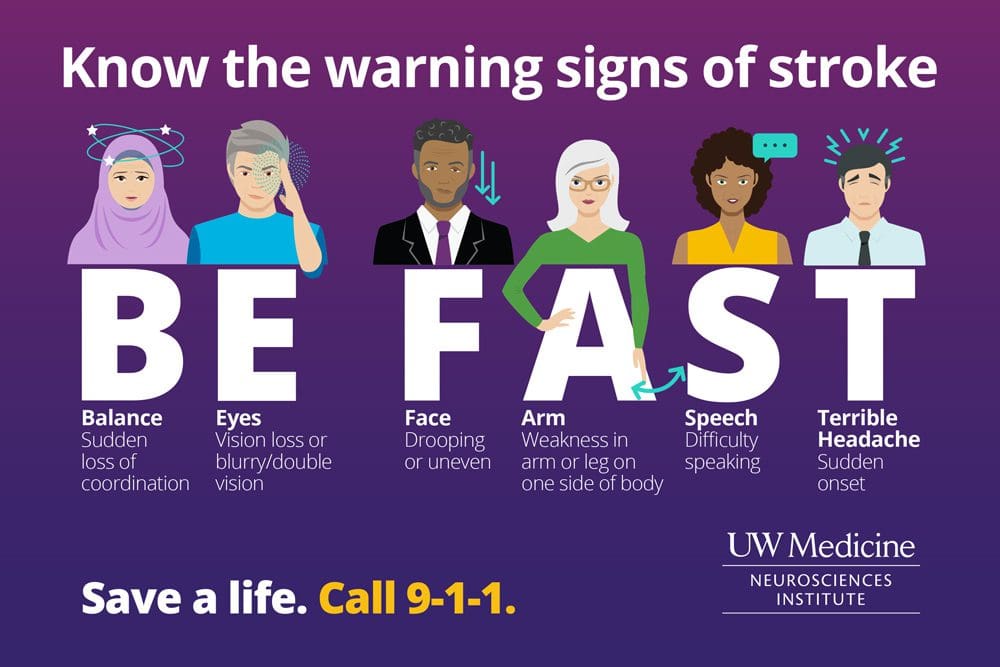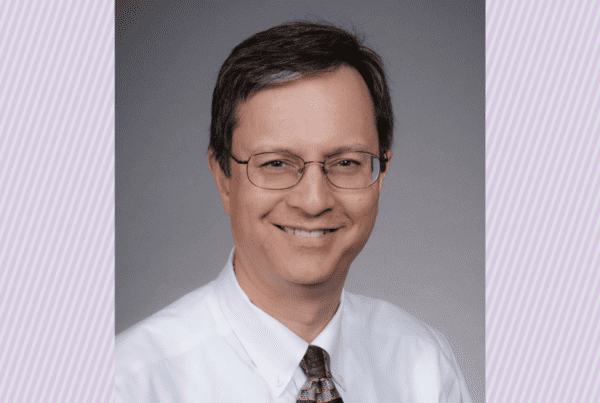For board-certified vascular neurologist Natalie Weathered, MD, the human brain has always been an enticing enigma. Even before she selected a residency program, her preference for neurology was obvious.
“I was really in love with the brain and the puzzles neurology patients present,” she says. “They have a unique combination of symptoms. My job is to put that puzzle together, knowing the way the anatomy of the brain is structured.”
She realized she wanted to concentrate on stroke care when she started her neurology residency with an inpatient rotation.
“During the first day of my first neurology residency rotation, I administered the drug tPA to someone who came into the emergency room who met the stroke criteria,” Weathered says.
She describes it as her first real-world experience with tissue plasminogen activator (tPA), the clot-busting drug that treats ischemic stroke.
“It was such an adrenaline rush. I didn’t realize how good it would feel to see a patient get better because of our treatment,” she says.
From that moment, Weathered says she was dedicated to minimizing the effects of stroke and delivering the care affected patients need as quickly and safely as possible.
Now, she does that both by helping patients as a neurologist with a subspecialty in vascular neurology, but also by teaching our future stroke providers as the director of the UW School of Medicine Neurology Residency Program and a clinical assistant professor in the Department of Neurology.
A commitment to acute stroke care
For Weathered, providing the best acute stroke care means being in the moment with patients and focusing on their fears and concerns.
“Stroke patients are struggling with a new disability that can be terrifying for them,” she says. “My job is to support them both physically and mentally.”
Joining Harborview Medical Center in October 2020 made it easy for Weathered to live out her clinical care philosophy. Harborview has the tools necessary to remove the larger blood clots that cause more severe strokes, plus an integrated team of vascular neurologists and interventional neuroradiologists. This expert team offers stroke services to one of the largest patient populations nationwide. In fact, they frequently see patients who have been airlifted from Alaska, Idaho and Montana.
Weathered spends about nine weeks in active hospital care each year providing acute services. On an average day, she sees about 18 patients and focuses on addressing their urgent physical needs and guiding them to better future health.
“My No. 1 job is to listen. I need patients to tell me their symptoms and when they started,” she says. “Once I’ve made the diagnosis and started the appropriate treatment, my job becomes education.”
During these conversations, she explains what’s going on in the patient’s body and discusses a realistic prognosis. She also offers information about treatment options, including new medications that have emerged in recent years.
Delivering stroke services remotely
Weathered is also a member of Harborview’s telestroke service, often working 24-hour shifts. This 24/7 video and telephone program partners with 11 hospitals in the region and receives roughly 155 consult requests each month.
It’s a life-saving initiative that allows Weathered and her colleagues to provide expert services to patients in remote or low-resource locations via the “stroke phone.”
“We make sure that we’re quick and responsive to our neighboring hospitals, so it’s very intense,” she says. “When our telestroke partners call with a patient who may qualify for thrombolytic medication, we have to be ready at the drop of a hat to jump on the computer to evaluate the patient camera-to-camera, ask them questions, and perform an exam. We then counsel them as to what we think is causing their symptoms and what the next steps are in terms of further testing and treatment.”
In addition to those real-time assessments, she can access any patient images and write notes in the patient’s medical record for the remote physician to use during the patient’s care.
A dedication to education
It was more than her dedication to acute clinical care that drew Weathered to UW Medicine, though. It was also the opportunity to continue her involvement in resident education.
During her previous tenure at Weill Cornell Medicine in New York City, she served as the neurology residency associate program director. And when the UW School of Medicine asked her to step into its program director role, she accepted.
“It felt like the stars aligned — there was no better job I could possibly imagine. I love mentoring residents. I love watching them grow and become their own neurologists,” she says. “It’s a joy to watch them graduate and go on to their fellowships and become attendings. Knowing I play a small part in potentially affecting their career decisions is very rewarding.”
In addition to administrative duties and planning a wide range of training opportunities in a variety of settings, Weathered focuses on helping residents build camaraderie. The pandemic isolated everyone, she says, and residents need a supportive environment.
“Right now, we’re trying to relearn how to build bridges between our trainees, both inside and outside the hospital. In your early years of training, bonding with colleagues gives you the best hope for enjoying your environment and, ultimately, your career,” she says. “Helping them make those connections is one of the most rewarding aspects of my job.”
Know the signs of stroke



